While the world of PC components is always pushing forward, the AMD AM3+ socket remains a topic of interest for budget builders and enthusiasts looking to maximize performance on a legacy system. Based on the “Piledriver” and “Bulldozer” microarchitectures, the FX-series processors offered high core counts and aggressive clock speeds for their time. For users with an existing AM3+ motherboard, upgrading the CPU can still provide a meaningful performance uplift for gaming and multitasking.
This article provides a purely informational, fact-based analysis of the most capable processors available for the AM3+ platform. We will explore their technical specifications, evaluate their performance characteristics, and identify the ideal use cases for each model, helping you make an informed decision for your system. The focus here is on objective data to understand how these components function within a balanced PC build.
Understanding the AM3+ Platform in the Modern Era
The AM3+ platform was AMD’s primary enthusiast desktop socket before the introduction of Ryzen. It is notable for its use of DDR3 memory and its “module” approach to CPU design, where two cores share certain resources. While its single-threaded performance is not competitive with modern processors, its multi-core capabilities can still handle many productivity tasks and less demanding sim racing games.
Understanding the limitations and strengths of this architecture is key. For example, a high-core-count FX processor can be a cost-effective engine for a home server or a budget workstation, but it may bottleneck a high-end graphics card in the latest CPU-intensive games. It’s also important to consider that PC gaming is worth it when components are well-balanced.
AM3+ CPU Models: A Comprehensive Comparison
This table provides a direct comparison of the key technical specifications for the ten AM3+ processors covered in this analysis. All listed models are “Black Edition,” meaning they feature an unlocked multiplier for overclocking.
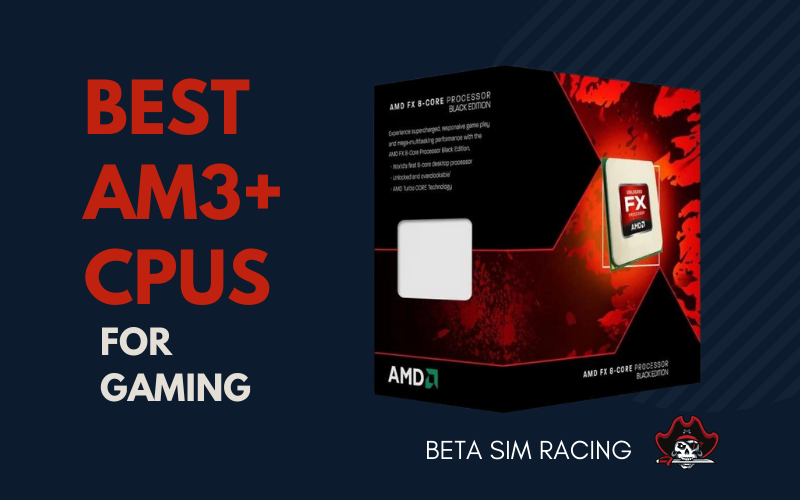
| Processor | Cores / Threads | Base Clock | Max Turbo Frequency | L2 Cache | L3 Cache | TDP (Watts) | Architecture |
| AMD FX-9370 | 8 / 8 | 4.4 GHz | 4.7 GHz | 8MB | 8MB | 220W | Vishera |
| AMD FX-8370 | 8 / 8 | 4.0 GHz | 4.3 GHz | 8MB | 8MB | 125W | Vishera |
| AMD FX-8350 | 8 / 8 | 4.2 GHz | 8MB | 8MB | 125W | Vishera | |
| AMD FX-8150 | 8 / 8 | 3.6 GHz | 4.2 GHz | 8MB | 8MB | 125W | Zambezi |
| AMD FX-8300 | 8 / 8 | 3.3 GHz | 4.2 GHz | 8MB | 8MB | 95W | Vishera |
| AMD FX-6300 | 6 / 6 | 3.5 GHz | 4.1 GHz | 6MB | 8MB | 95W | Vishera |
| AMD FX-6100 | 6 / 6 | 3.3 GHz | 3.9 GHz | 6MB | 8MB | 95W | Zambezi |
| AMD FX-4350 | 4 / 4 | 4.2 GHz | 4.3 GHz | 4MB | 8MB | 125W | Vishera |
| AMD FX-4300 | 4 / 4 | 3.8 GHz | 4.0 GHz | 4MB | 4MB | 95W | Vishera |
| AMD FX-4130 | 4 / 4 | 3.8 GHz | 3.9 GHz | 4MB | 4MB | 125W | Zambezi |
Detailed Analysis of the Top 10 AM3+ Processors
Each processor in the FX series has a distinct profile. The following sections break down the specifications and performance characteristics of each of the ten selected CPUs to clarify their intended function.
1. AMD FX-8350
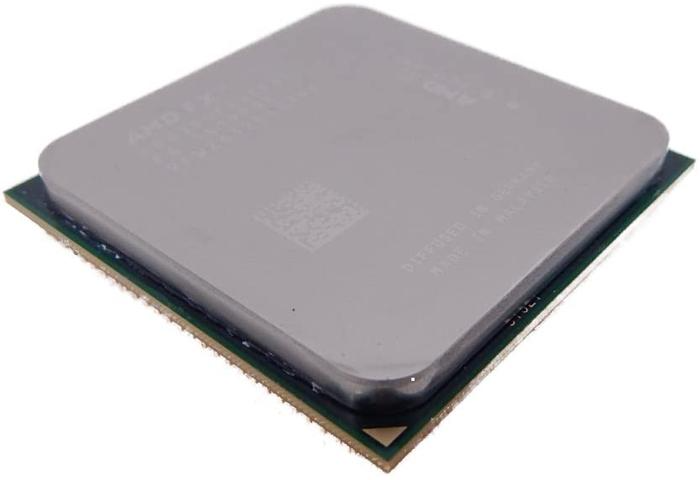
Key Specifications
- Cores/Threads: 8 / 8
- Base Clock Speed: 4.0 GHz
- Max Turbo Frequency: 4.2 GHz
- Total Cache (L2+L3): 16MB
- TDP: 125W
Performance Analysis
The FX-8350 was a flagship processor for the Vishera architecture, offering a high 4.0 GHz base clock and eight physical cores. Its strength lies in heavily threaded applications where it can utilize all its cores, such as video encoding, rendering, and running virtual machines. Its single-core performance, a known limitation of the architecture, is adequate for general use but can be a limiting factor in games that rely on a single strong core.
Ideal Use Cases
- Budget gaming rigs for titles optimized for multi-core performance.
- Entry-level content creation and streaming workstations.
- General-purpose desktop use with heavy multitasking.
Potential Limitations
- The 125W TDP requires a robust cooling solution to prevent thermal throttling.
- Can bottleneck modern mid-to-high-end GPUs like the RTX 3070 in CPU-bound scenarios.
- Requires a motherboard with a quality power delivery system. If you suspect issues, it’s useful to know how to test your motherboard.
2. AMD FX-8370
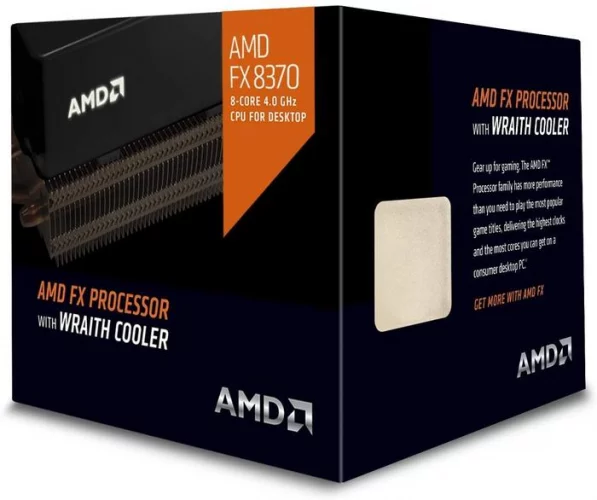
Key Specifications
- Cores/Threads: 8 / 8
- Base Clock Speed: 4.0 GHz
- Max Turbo Frequency: 4.3 GHz
- Total Cache (L2+L3): 16MB
- TDP: 125W
Performance Analysis
The FX-8370 is a marginal refresh of the FX-8350, featuring the same core configuration but with a 100 MHz higher maximum turbo frequency. This results in a very slight performance uplift in applications that can leverage the higher boost clock. Functionally, it performs nearly identically to the FX-8350 in most real-world scenarios, making it another strong contender for multi-threaded tasks.
Ideal Use Cases
- Systems where every bit of multi-core performance is needed on the AM3+ platform.
- Users looking for one of the highest-performing 125W FX processors.
- Budget streaming and gaming builds.
Potential Limitations
- Shares the same 125W TDP and cooling requirements as the FX-8350.
- The performance gain over the FX-8350 is minimal and may not be noticeable in daily use.
- Like all FX CPUs, it lacks modern instruction sets and efficiencies.
3. AMD FX-6300

Key Specifications
- Cores/Threads: 6 / 6
- Base Clock Speed: 3.5 GHz
- Max Turbo Frequency: 4.1 GHz
- Total Cache (L2+L3): 14MB
- TDP: 95W
Performance Analysis
The FX-6300 was one of the most popular models in the FX lineup due to its excellent performance-to-cost ratio. With six cores and a lower 95W TDP, it offers a balanced approach. It provides good multi-threaded performance for its class, making it a capable chip for 1080p gaming and general productivity without the demanding power and cooling needs of the 8-core models.
Ideal Use Cases
- Highly cost-effective budget gaming PCs.
- General desktop use where responsiveness and multitasking are valued.
- Upgrading from a 4-core FX or older Phenom II processor.
Potential Limitations
- Fewer cores mean it will fall behind 8-core models in heavily threaded workloads.
- Single-core performance remains a weakness of the underlying architecture.
4. AMD FX-9370
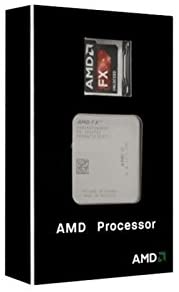
Key Specifications
- Cores/Threads: 8 / 8
- Base Clock Speed: 4.4 GHz
- Max Turbo Frequency: 4.7 GHz
- Total Cache (L2+L3): 16MB
- TDP: 220W
Performance Analysis
The FX-9370 represents the absolute peak of the FX series in terms of clock speed. It is essentially a highly-binned FX-8350 factory-overclocked to its limits. This results in the best possible performance from the Vishera architecture, but it comes at a significant cost: a massive 220W TDP. This processor demands a premium cooling solution and a motherboard with a very robust Voltage Regulator Module (VRM) to handle the power draw.
Ideal Use Cases
- Enthusiasts aiming to extract maximum performance from the AM3+ platform.
- Users with high-end cooling and a compatible 990FX chipset motherboard.
Potential Limitations
- Extreme power consumption and heat output.
- Limited motherboard compatibility; not all AM3+ boards can support 220W CPUs. It’s crucial to check the motherboard’s official support list. One of the top causes of motherboard failure is overpowering the VRMs.
- Performance gains over an overclocked FX-8350 may not justify the power and thermal challenges.
5. AMD FX-8300
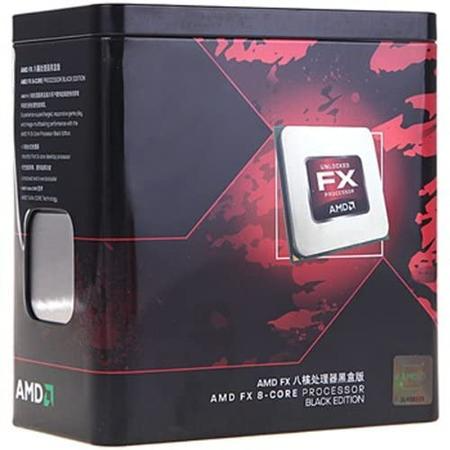
Key Specifications
- Cores/Threads: 8 / 8
- Base Clock Speed: 3.3 GHz
- Max Turbo Frequency: 4.2 GHz
- Total Cache (L2+L3): 16MB
- TDP: 95W
Performance Analysis
The FX-8300 offers the full 8-core configuration within a more manageable 95W thermal envelope. It achieves this by lowering the base clock speed significantly compared to the FX-8350. While its out-of-the-box performance is lower, its turbo frequency is still respectable. For users with motherboards that have weaker power delivery, the FX-8300 is an excellent way to get 8-core performance without risking instability.
Ideal Use Cases
- Energy-efficient 8-core builds.
- Upgrading pre-built systems with limited cooling or motherboard capabilities.
- Home servers or systems where power consumption is a consideration.
Potential Limitations
- Lower base clock can result in reduced performance in sustained, all-core workloads compared to 125W models.
- Relies heavily on its turbo boost capability to reach peak performance.
6. AMD FX-8150

Key Specifications
- Cores/Threads: 8 / 8
- Base Clock Speed: 3.6 GHz
- Max Turbo Frequency: 4.2 GHz
- Total Cache (L2+L3): 16MB
- TDP: 125W
Performance Analysis
The FX-8150 is the flagship of the first-generation “Zambezi” architecture. While it shares the 8-core/8-thread design with its Vishera successors, Zambezi had lower Instructions Per Clock (IPC). This means that at the same clock speed, it performs slightly worse than a Vishera-based chip like the FX-8350. It remains a capable multi-threaded processor but is generally outperformed by the subsequent generation.
Ideal Use Cases
- Users who can acquire one for a very low cost.
- Multi-threaded tasks where it can still offer a performance advantage over 4-core and 6-core models.
Potential Limitations
- Based on the less efficient Zambezi architecture.
- Consumes 125W but offers lower performance than the 125W Vishera parts.
- May require a BIOS update on some motherboards to ensure compatibility.
7. AMD FX-4350

Key Specifications
- Cores/Threads: 4 / 4
- Base Clock Speed: 4.2 GHz
- Max Turbo Frequency: 4.3 GHz
- Total Cache (L2+L3): 12MB
- TDP: 125W
Performance Analysis
The FX-4350 prioritizes clock speed over core count. With a high 4.2 GHz base clock, it provides strong performance in applications that are lightly threaded and frequency-dependent. However, its 4-core design means it will struggle with heavy multitasking compared to the 6-core and 8-core FX processors. The 125W TDP is high for a quad-core processor, a trade-off for its aggressive frequency.
Ideal Use Cases
- Budget gaming focused on older titles that rely on 1-2 cores.
- General desktop tasks that benefit from high clock speeds.
Potential Limitations
- High power consumption for a quad-core CPU.
- Limited multitasking capability compared to higher core count models.
- Outperformed in multi-threaded scenarios by the more efficient FX-6300.
8. AMD FX-4300
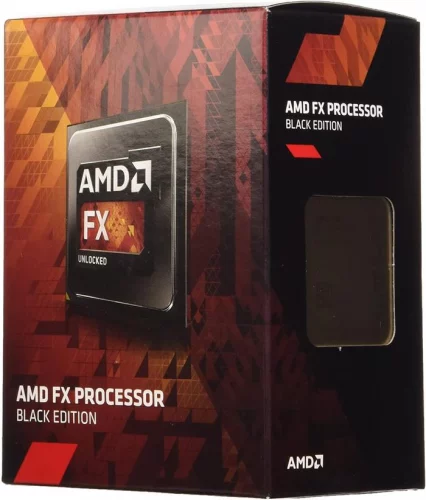
Key Specifications
- Cores/Threads: 4 / 4
- Base Clock Speed: 3.8 GHz
- Max Turbo Frequency: 4.0 GHz
- Total Cache (L2+L3): 8MB
- TDP: 95W
Performance Analysis
The FX-4300 is a more balanced quad-core offering. It operates at a slightly lower frequency than the FX-4350 but does so within a more standard 95W TDP. This makes it a more practical choice for basic builds and systems with standard cooling. Its performance is suitable for light gaming and everyday computing tasks.
Ideal Use Cases
- Entry-level system builds.
- Upgrading from dual-core Athlon II or older processors on an AM3+ board.
- Low-power office or general-use PCs.
Potential Limitations
- Limited to four cores, which is a bottleneck for modern gaming and productivity.
- Modest clock speeds and cache size.
9. AMD FX-6100

Key Specifications
- Cores/Threads: 6 / 6
- Base Clock Speed: 3.3 GHz
- Max Turbo Frequency: 3.9 GHz
- Total Cache (L2+L3): 14MB
- TDP: 95W
Performance Analysis
As a first-generation Zambezi part, the FX-6100 suffers from the same lower IPC as the FX-8150. Despite having six cores, its performance can be matched or exceeded by the newer dual-module/four-core Vishera processors in some lightly threaded tasks. However, in workloads that can use all six cores, it holds an advantage over any quad-core FX chip.
Ideal Use Cases
- Very low-cost builds where multi-threaded capability is a priority.
- Users upgrading from an older quad-core on a tight budget.
Potential Limitations
- Based on the less efficient Zambezi architecture.
- Lower clock speeds and IPC compared to the FX-6300.
- Can be a bottleneck for modern GPUs.
10. AMD FX-4130
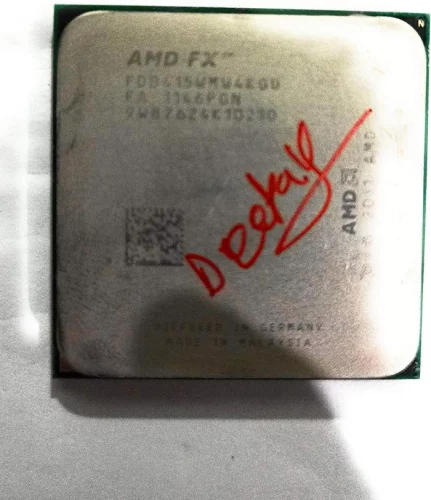
Key Specifications
- Cores/Threads: 4 / 4
- Base Clock Speed: 3.8 GHz
- Max Turbo Frequency: 3.9 GHz
- Total Cache (L2+L3): 8MB
- TDP: 125W
Performance Analysis
The FX-4130 is another quad-core processor based on the older Zambezi architecture. Its specifications are very similar to the Vishera-based FX-4300, but its high 125W TDP is a significant drawback for its performance level. The combination of older architecture and high power draw makes it one of the less desirable options on this list unless acquired for nearly free.
Ideal Use Cases
- Basic computing tasks.
- As a placeholder CPU or for troubleshooting purposes.
Potential Limitations
- Inefficient power-to-performance ratio.
- Outperformed by the 95W FX-4300 and FX-6300.
- Based on the outdated Zambezi architecture.
Key Factors for Selecting an AM3+ CPU
Choosing the right processor involves more than just picking the one with the highest numbers. For a legacy platform like AM3+, understanding the interplay of these factors is critical.
Core and Thread Count
For the FX series, cores are grouped in modules. An 8-core CPU has four modules, while a 6-core has three.
- 8 Cores (FX-8xxx, FX-9xxx): Best for heavy multitasking, streaming, video editing, and modern games that are optimized for many threads.
- 6 Cores (FX-6xxx): A strong middle ground, offering good gaming and multitasking performance for budget-oriented systems.
- 4 Cores (FX-4xxx): Suitable for basic tasks and older games but will struggle with modern demanding applications.
Clock Speed vs. Instructions Per Clock (IPC)
Clock speed (measured in GHz) is how many cycles a processor completes per second. IPC refers to how many tasks a CPU can perform in one cycle. The FX series was known for high clock speeds but had a relatively low IPC compared to its contemporaries. This is why an FX-8350 at 4.0 GHz does not perform on par with a more modern CPU at a lower clock speed. When comparing within the FX family, higher clock speeds generally lead to better performance, but it’s important to also note the architectural generation (Vishera is superior to Zambezi).
Thermal Design Power (TDP) and Cooling Requirements
TDP is a measure of the maximum amount of heat a CPU is expected to generate under a typical heavy workload.
- 220W (FX-9xxx): Requires high-end air or liquid cooling and exceptional case airflow.
- 125W (Most FX-8xxx and some FX-4xxx/6xxx): Requires a capable aftermarket tower cooler. The stock cooler is often insufficient for sustained loads or overclocking.
- 95W (FX-6300, FX-8300, etc.): More manageable and can often be cooled effectively with a decent budget aftermarket cooler. This is critical for maintaining a normal CPU temperature while gaming.
Motherboard Chipset and VRM Compatibility
Not all AM3+ motherboards are created equal. The chipset (e.g., 970, 990X, 990FX) determines features, but the Voltage Regulator Module (VRM) determines power delivery.
Expert Tip: A motherboard’s ability to provide stable power is crucial for high-TDP processors. A board with a weak 4+1 phase power design may struggle with a 125W CPU and will be incompatible with a 220W CPU. For the FX-8xxx and FX-9xxx series, a motherboard with an 8+2 phase power design on a 990X or 990FX chipset is strongly recommended. Always check your motherboard manufacturer’s CPU support list before purchasing a processor. This is a key step in determining when you should upgrade your motherboard.
Frequently Asked Questions (FAQ)
What is the fastest AM3+ processor?
Technically, the AMD FX-9590 (5.0 GHz Turbo) and FX-9370 (4.7 GHz Turbo) are the fastest, due to their exceptionally high clock speeds. However, their 220W TDP makes them impractical for most users. The AMD FX-8370 is often considered the fastest practical option, offering strong performance within a more manageable 125W TDP.
Is the AM3+ platform still a viable option?
For new builds, it is generally not a cost-effective or performance-competitive choice compared to modern entry-level platforms. However, for someone who already owns an AM3+ motherboard, a CPU upgrade can be a very viable and inexpensive way to extend the life of their system for 1080p gaming, web Browse, and general office tasks.
What is the difference between the AM3 and AM3+ sockets?
The AM3+ socket is a modified version of the AM3 socket designed specifically for the FX-series processors. AM3+ CPUs are not backward compatible with AM3 motherboards. However, most AM3+ motherboards are backward compatible with older AM3 CPUs (like the Phenom II series). A key physical difference is the slightly larger pin holes and the black socket color of AM3+ versus the white of AM3.
Can a modern Ryzen CPU work in an AM3+ motherboard?
No. Ryzen CPUs use entirely different sockets, such as AM4 and AM5. The architecture, pin layout, and chipset are completely incompatible. You cannot install a Ryzen processor in an AM3+ motherboard.
What type of RAM do AM3+ processors use?
Do I need a powerful GPU for an AM3+ system?
Pairing an extremely powerful modern GPU like an RTX 40-series card with an AM3+ CPU will almost certainly result in a significant CPU bottleneck, meaning the GPU’s performance will be held back. A balanced pairing would involve a more modest GPU, such as a GTX 1060/1660 or an RX 580, which aligns better with the overall performance capabilities of the FX platform.

Holding a Ph.D. in Computer Science, Dr. Alistair Finch is our chief PC Component Benchmark Analyst. He provides meticulous, data-driven analysis of CPUs and GPUs, moving beyond marketing claims to reveal their true performance. His guides help readers understand the intricate relationship between hardware architecture and real-world gaming frame rates.
